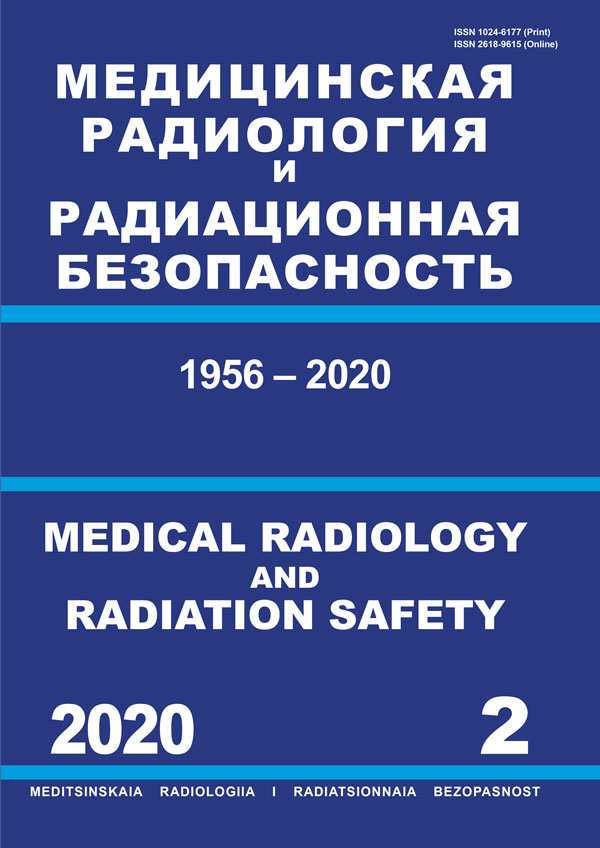Russian Federation
CSCSTI 76.03
CSCSTI 76.33
Russian Classification of Professions by Education 14.04.02
Russian Classification of Professions by Education 31.06.2001
Russian Classification of Professions by Education 31.08.08
Russian Classification of Professions by Education 32.08.12
Russian Library and Bibliographic Classification 51
Russian Library and Bibliographic Classification 534
Russian Trade and Bibliographic Classification 5708
Russian Trade and Bibliographic Classification 5712
Russian Trade and Bibliographic Classification 5734
Russian Trade and Bibliographic Classification 6212
The nuclear medicine phantom development is based on the step by step description of the computational and experimental biological object model. Computational phantoms are used for geometry of the object description and simulate physics of particle interactions with matter, while experimental phantoms are used for quality control tests and standardization of functional research protocols. Common examples are the dosimetry planning of radionuclide therapy and post-therapeutic scintigraphy with 131I. This review provides a list of methods for computational and experimental phantoms. Examples of existing phantoms created for the nuclear medicine tasks are also given.
nuclear medicine, theranostics, phantom, mathematical phantom, experimental phantom, 3D print, quantitative dosimetry
1. Larry A. The Phantoms of Medical and Health Physics. Springer. 2014; 290.
2. Sidney Y. Handbook of Materials Modeling. Springer. 2005; 2965.
3. Klimanov VA. Radiobiological and Dosimetric Planning in Radionuclide Therapy. Part 1: Student book. Moscow. 2011; 604. (in Russ.).
4. Camoni L. Quality Control of Nuclear Medicine Instrumentation and Protocol Standardisation. EANM 2017;168.
5. Xu XG. Handbook of Anatomical Models for Radiation Dosimetry. CRC Press. 2009;757.
6. Bailey L, Willowson K. An Evidence-Based Review of Quantitative SPECT Imaging and Potential Clinical Applications. J Nucl Med. 2013;54(83);9.
7. Jan S, Santin G, Strul D. Users Guide V8.0 Introduction [internet source] URL:http://wiki.opengatecollaboration.org/index.php?title=Users_Guide_V8.0&oldid=910.
8. Sun R, Limkin EJ, Dercle L. Computational medical imaging (radiomics) and potential for immuno-oncology. Journal de la Societe francaise de radiotherapie oncologique. 2017;648-54.
9. International Atomic Energy Agency. Quality Assurance for SPECT Systems. IAEA Human Health Series. Vienna, Austria. 2009;6:263.
10. International Atomic Energy Agency. Planning a Clinical PET Centre. IAEA Human Health Series. Vienna, Austria. 2010;11:160.
11. Busemann E, Płachcínska A, Britten A. Routine quality control recommendations for nuclear medicine instrumentation. Eur J Nucl Med Mol Imaging. 2010;37;662-71.
12. International Atomic Energy Agency. Clinical PET/CT Atlas: A Casebook of Imaging in Oncology. IAEA Human Health Series. IAEA. 2015;201.
13. Khalil M, Tremoleda J, Bayomy T. Molecular SPECT Imaging: An Overview. Int J Mol Imaging. 2011;15.
14. Arsvold D. Emision tomography: basics of PET and SPECT. Technosphere. 2009; 599. (in Russ.)].
15. Agostinelli AG, Smolen SD, Nath RA. New water-equivalent plastic for dosimetry calibration. Med Phys. 1992;19:774.
16. Tello VM, Tailor RC, Hanson WF. How water equivalent are water-equivalent plastics for output calibration of photon and electron beams? Med Phys. 1995;22:1177-89.
17. Selivanov MG, Aleksandruk AG, Chetverikov SF. On the possibility of using a lamellar tissue equivalent phantom to verify the dose distribution in radiation therapy. Buk. 2017; 30-3. (in Russ.)].
18. Whole Body Phantom PBU-60 [internet source]. URL: https://www.kyotokagaku.com/products/detail03/ph-2b.html.
19. Modular Full Body X-Ray Phantom [internet source]. URL: https://www.erler-zimmer.de/shop/en/medical-simulators/x-ray-ct/10180/modular-full-body-x-ray-phantom.
20. Anthtopomorhic phantoms [internet source]. URL: http://rsdphantoms.com/rdanth.htm.
21. Mitsouras D, Liacouras P, Imanzadeh A. Medical 3D Printing for the Radiologist. Radiographics In Press. 2015;7:1965-87.





